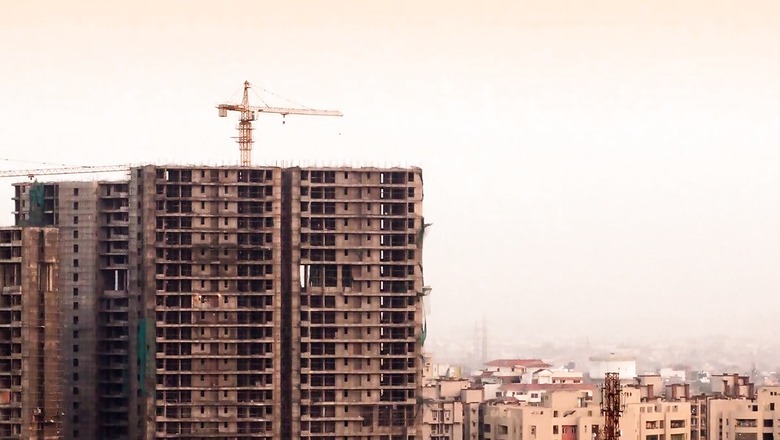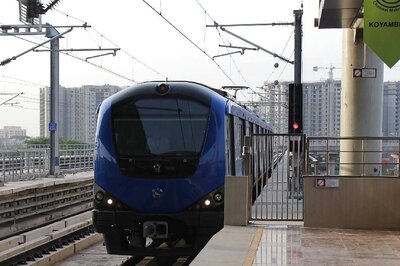
views
Written By Ramani Sastri
Being the fastest-growing economy, India remains at the focal point as we journey towards becoming the third-largest economy in the world. The Indian real estate market witnessed an unprecedented surge in 2023, surpassing all expectations and setting new records. A big booster to housing demand has been the increased importance of owning a property backed by consumer confidence in the overall vibrant economic scenario.
India’s real estate industry is predicted to make up 13 per cent of the nation’s GDP. This is largely due to factors such as urbanisation, middle-class expansion, and infrastructure development. Foreign investments and government support also contribute to the positive market outlook.
Between 2022 and 2047, India’s urban population is projected to increase by 328 million – more significant than the entire population of the United States. In the wake of urbanisation, this demand is vividly manifesting itself in the form of an insatiable appetite for housing, commercial spaces, and essential infrastructure to support the evolving urban lifestyle.
As per a recent report, housing sales in the top seven cities in India – including New Delhi, Mumbai, Bengaluru, Pune, Hyderabad, Chennai, Kolkata – witnessed a year-on-year surge of 31 per cent to an all-time high in 2023. What explains this momentum in the real estate market? Here are some factors that account for this trend.
Rapid growth of Urbanisation
With nearly more than half of its citizens living in cities, the country is one of the most urbanised in the world. As more people relocate to metropolitan regions in search of employment and better opportunities, this trend towards real estate demand is expected to continue in the coming years.
As per a UN report, India’s urban population is estimated to stand at 675 million in 2035. By 2030, the urban percentage of the world’s population is projected to reach 60 per cent. This demographic tidal wave is no mere statistic; it signals an unprecedented demand surge across the real estate spectrum.
Elevated aspirational lifestyle driving the market
The growth of the middle class in the country has been exponential. It is estimated that this population could be around 200-300 million who have a strong purchasing power that is driving the economy and the real estate sector. Millennials, who constitute a large portion of middle-class homebuyers, have also turned more aspirational and the rise of this new affluent class, made up of young professionals, entrepreneurs, and high-income earners are looking for luxury homes that reflect their elevated lifestyle.
Massive Infrastructure growth
The demand and value of real estate, in turn, are profoundly influenced by the quality and accessibility of infrastructure. Well-developed transportation systems, such as highways, airports, and public transit, enhance the desirability of real estate, driving up property values in well-connected areas. Home buyers would be keen to have access to business centers, making connectivity easy.
High desire for Homeownership
Buyers are now placing a greater emphasis on owning a home rather than opting for rental arrangements. Individuals have come to appreciate the advantages of residing in their own space with dedicated areas for work, study, and recreation. Consequently, there’s a heightened awareness regarding the intrinsic value of possessing a home, which offers a heightened sense of security and stability amidst periods of uncertainty. Real estate also reduces volatility and boosts return on risk. Compared to other assets, investing in real estate can be significantly safer.
Need for Social infrastructure
The idea of integrated living is quickly taking on in the residential sector as home buyers favor developments with state-of-the-art amenities, Home-buyers seek access to office buildings, parks, schools, hospitals, and shopping centers with entertainment. Home purchasers now seek to live a more tranquil, independent, and secure existence and hence the demand for township living is increasing positively as it meets civic, recreational and security needs.
High NRI investments
India is becoming a more popular real estate investment location for foreign investors, particularly the non-resident Indian’s (NRIs) who wish to own property in the country. There has been a rise in demand among the millennials contributing to the real estate economy. Not only the domestic investor, but even foreign investors are seeing value in the permanence of a residential home. This has been brought on by various elements, such as the nation’s robust economic growth and a favorable investment environment.
In conclusion, it can be said that the Indian real estate sector, central to the economy and supporting numerous industries, is set for sustained growth.
Factors like strong GDP growth, urbanisation, increasing incomes, and government initiatives, alongside the rising demand for various types of properties, all point to a bright future. India’s residential real estate segment continues to show boundless forward momentum and is setting unprecedented benchmarks. As the real estate landscape continues to evolve, stakeholders in the Indian market are hopeful of a thriving sector in the foreseeable future.
(The author is chairman and MD of Sterling Developers)

















Comments
0 comment